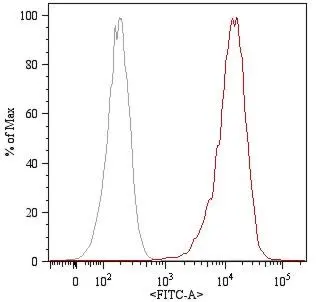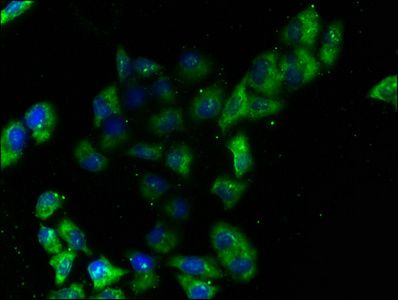
Surface staining of HUVEC (human umbilical vein endothelial cells) with anti-human CD105 (GTX18278) FITC. Total viable cells were used for analysis.
CD105 antibody [MEM-226]
GTX22529
ApplicationsFlow Cytometry, ImmunoPrecipitation, Mass Spectrometry, Western Blot
Product group Antibodies
TargetENG
Overview
- SupplierGeneTex
- Product NameCD105 antibody [MEM-226]
- Delivery Days Customer9
- ApplicationsFlow Cytometry, ImmunoPrecipitation, Mass Spectrometry, Western Blot
- CertificationResearch Use Only
- ClonalityMonoclonal
- Clone IDMEM-226
- Concentration1 mg/ml
- ConjugateUnconjugated
- Gene ID2022
- Target nameENG
- Target descriptionendoglin
- Target synonymsEND, HHT1, ORW1, endoglin, CD105 antigen, soluble endoglin
- HostMouse
- IsotypeIgG2a
- Protein IDP17813
- Protein NameEndoglin
- Scientific DescriptionThis gene encodes a homodimeric transmembrane protein which is a major glycoprotein of the vascular endothelium. This protein is a component of the transforming growth factor beta receptor complex and it binds to the beta1 and beta3 peptides with high affinity. Mutations in this gene cause hereditary hemorrhagic telangiectasia, also known as Osler-Rendu-Weber syndrome 1, an autosomal dominant multisystemic vascular dysplasia. This gene may also be involved in preeclampsia and several types of cancer. Alternatively spliced transcript variants encoding different isoforms have been found for this gene. [provided by RefSeq, May 2013]
- Storage Instruction2°C to 8°C
- UNSPSC12352203


![FACS analysis of KG1 cells using GTX11414 CD105 antibody [SN6].](https://www.genetex.com/upload/website/prouct_img/normal/GTX11414/GTX11414_233_FACS_w_23060501_509.webp)
![FACS analysis of KG1 cells using GTX11415 CD105 antibody [SN6] (FITC).](https://www.genetex.com/upload/website/prouct_img/normal/GTX11415/GTX11415_239_FACS_w_23060501_591.webp)
